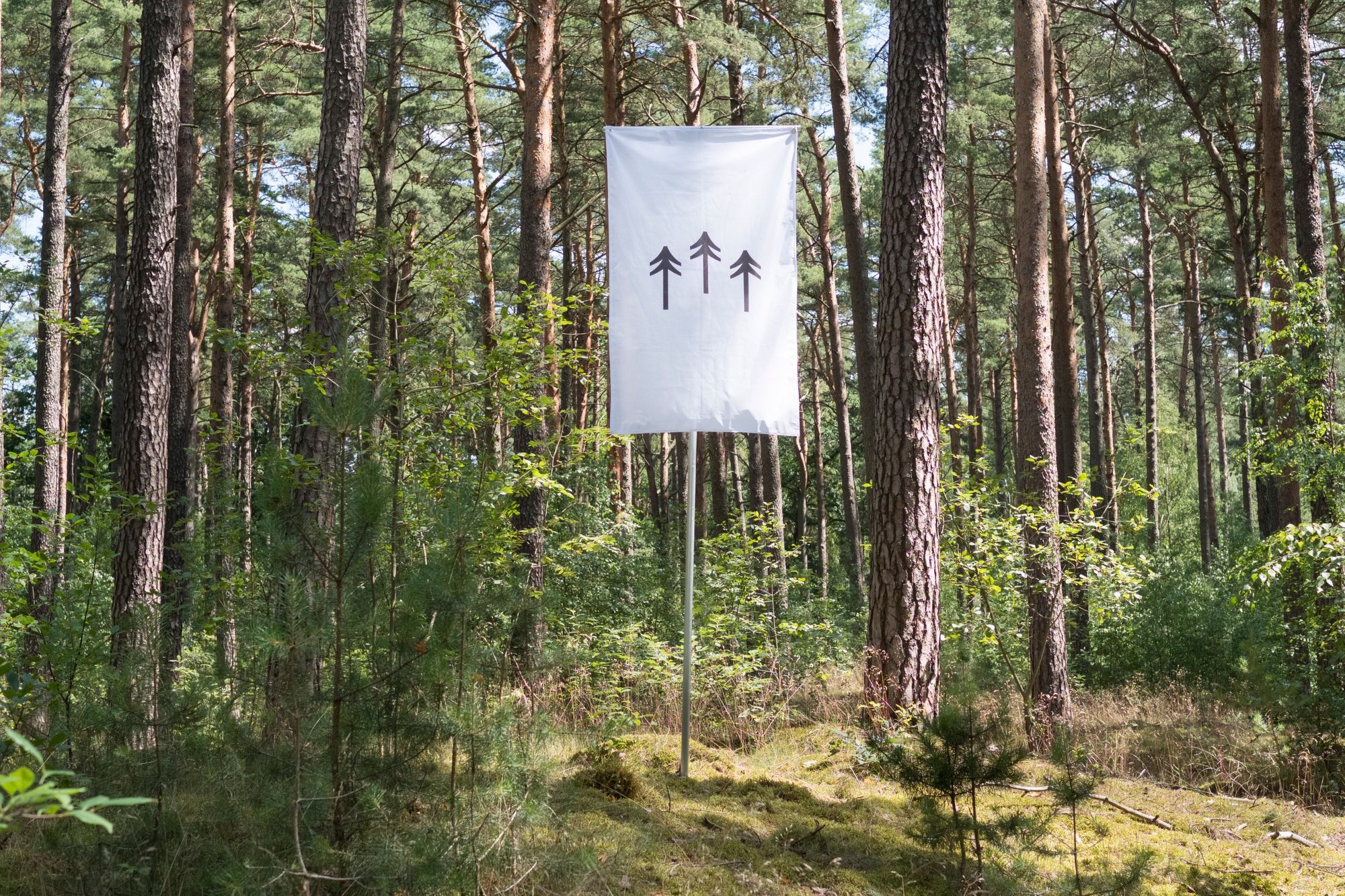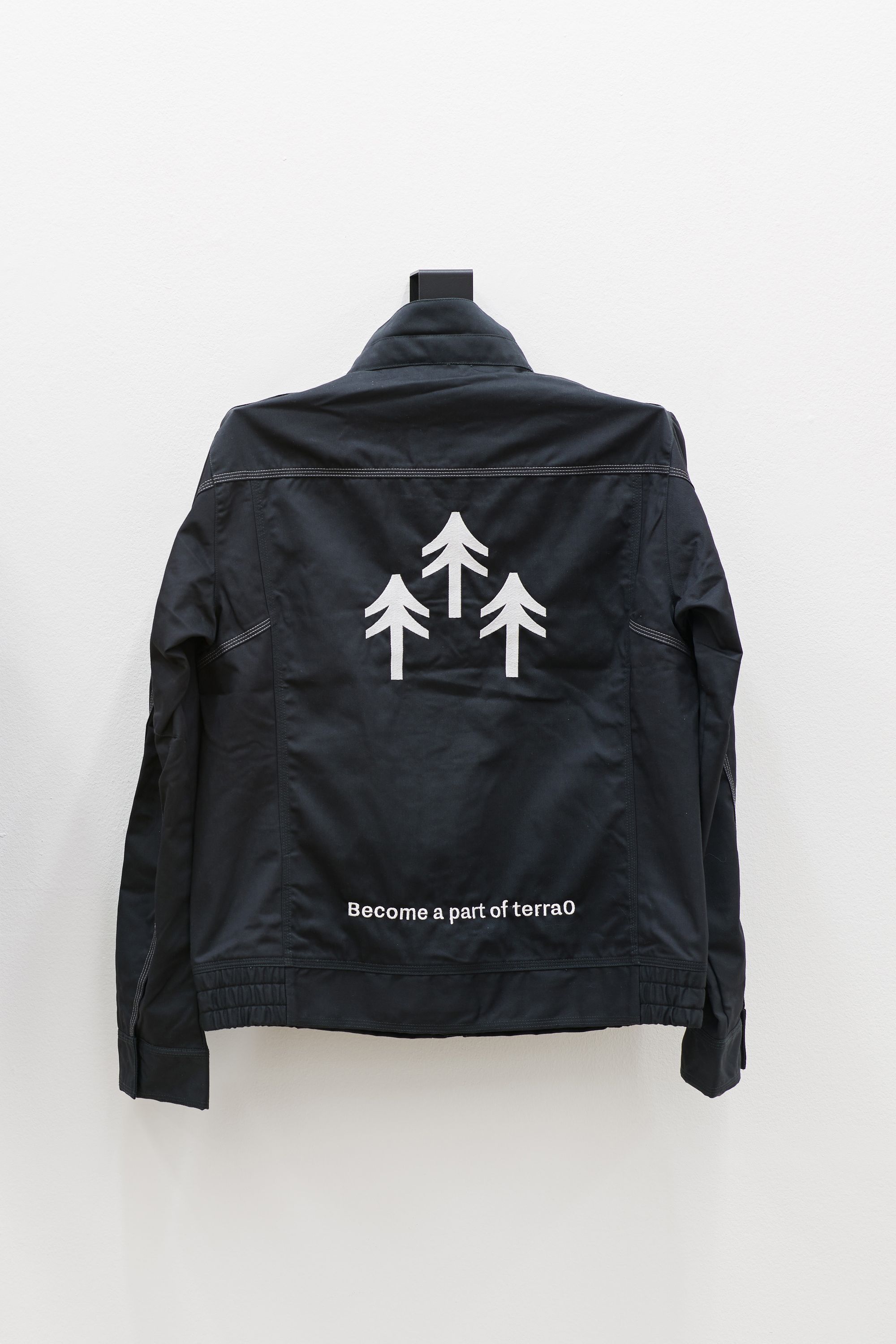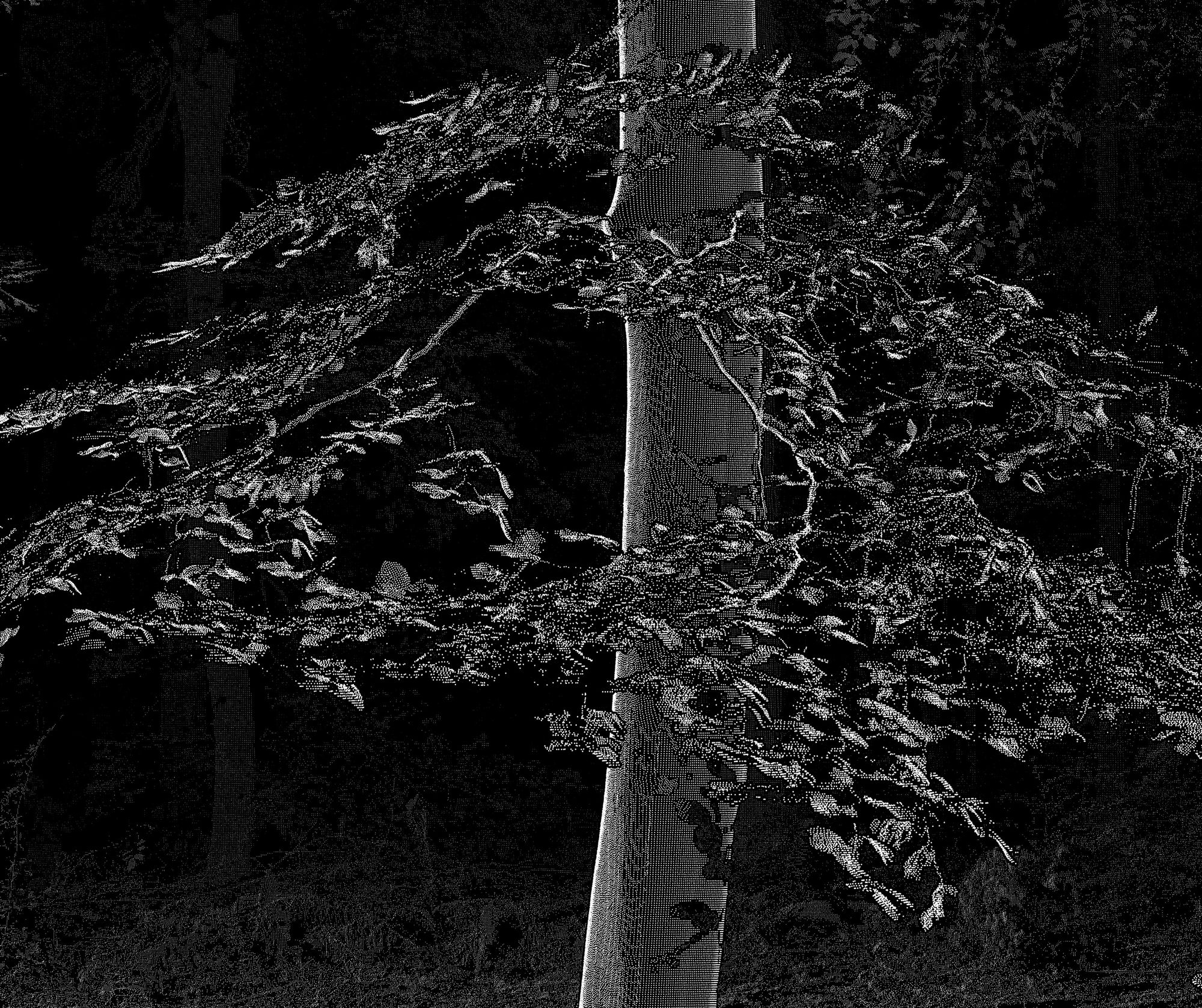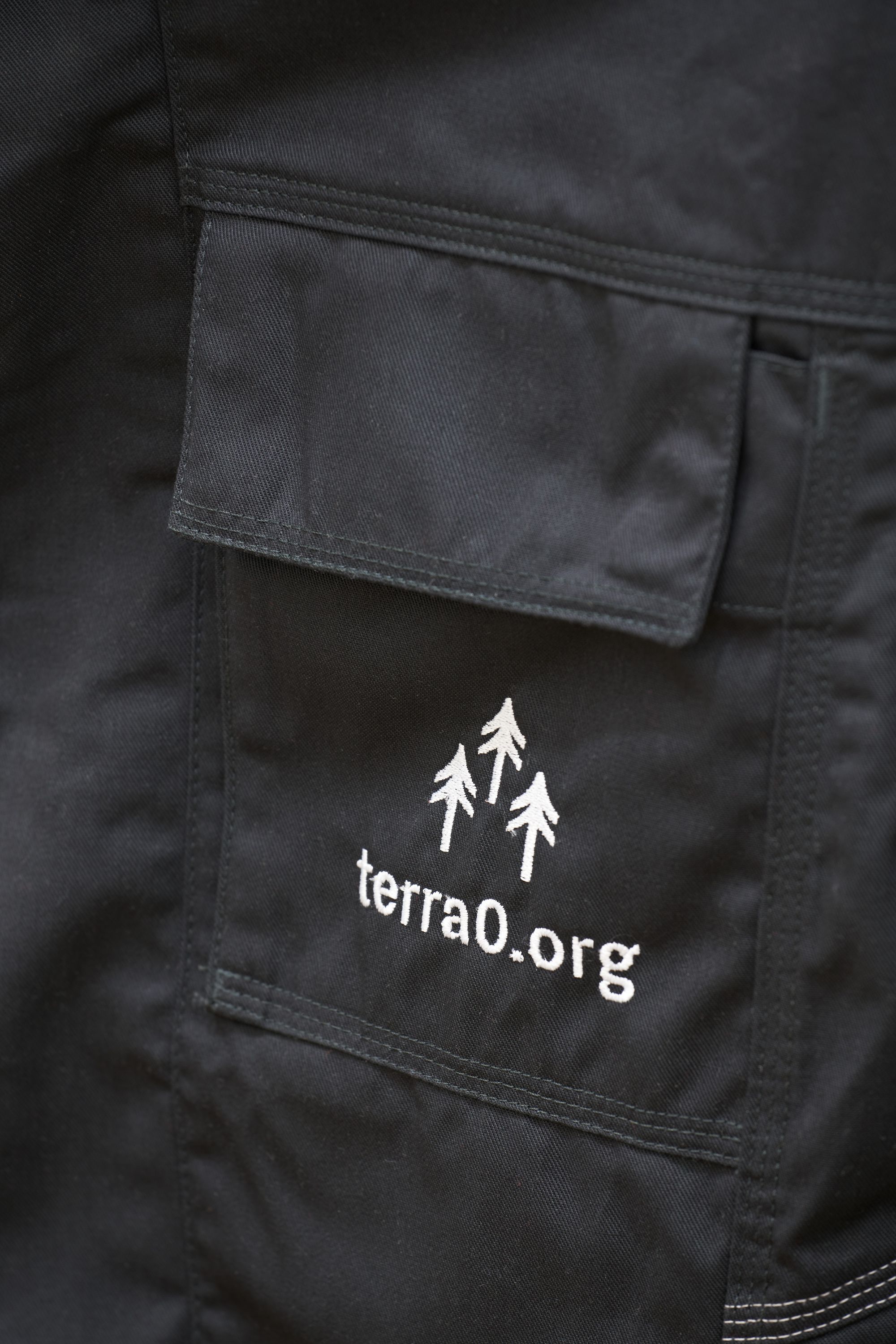We had a conversation with the art collective "terra0," composed of Paul Seidler and Paul Kolling. After working on their vision for many years, they have just reached a new stage in which their project will scale up and become a wider collective. For this interview, they told us about their journey, challenges and plans.
U⑧: Could you introduce yourselves?
PS: My name is Paul Seidler. I am an artist, programmer, and co-founder of "terra0," an artist collective founded in 2015 to deal with questions of nature, ownership, and technology and how these things interwire.
PK: I am Paul Kolling, also an artist and the other co-founder of "terra0." In my solo practice, I examine the social and spatial politics of infrastructure.
U⑧: Could you describe terra0 and its organizational structure?
PS: It's confusing because "terra0" refers to both an artist collective and the name of our first project. These two strands create an interesting duality, but when discussing "terra0," we primarily refer to ourselves as an artist group. Our initial project in 2016 was a speculative white paper titled "Can an Augmented Forest Own and Utilize Itself?, " which describes how an economic, ecological, and technological entity can emerge and exist as an autonomous agent, such as a Decentralized Autonomous Organization. A DAO can hold property and be augmented and controlled by a program that can control and administer capital. This autonomous agent, controlling a forest as a structure that transparently manages its inputs and outputs, would alter ownership structures and eventually eliminate human involvement.
When we started, many people were interested in what naturally constituted legal personhood and how it was constructed. These concepts intertwined, and possibilities for non-human personhood arose, leading to a starting point for thinking about ownership and the relationship between property, ownership, and law.
This autonomous agent, controlling a forest as a structure that transparently manages its inputs and outputs, would alter ownership structures to eliminate human involvement.
U⑧: Now, DAOs have become interesting again, but they have left the autonomous part in the background, right?
PK: The term "autonomy" was initially used for non-human organizations, but nowadays, it's associated with alternative regulatory states or interference. The number one example was always the fleet of self-driving cars, which offer their services and raise capital to expand and grow. We are experiencing a shift from this utopian or sci-fi thought to a very pragmatic implementation, just a digital form of organization for specific groups of people, often operating through Discord communities.
PS: One interesting point to highlight is the concept of autonomous agents, which stems from science fiction. Vitalik Buterin once mentioned reading "Daemon, " a book about an autonomous AI capable of controlling other entities. This idea was present at the beginning of Ethereum's development and evolved to address smart contract challenges, viewing them as autonomous programs with a limited scope of action. The closest thing to autonomous agents today are essentially ownerless protocols, such as Tornado Cash, whose deployed smart contract works continuously, non-stop, testing the edge of the technology.

© terra0, https://terra0.orgU⑧: How are the sales and purchases of forest parcels happening without human interaction?
PK: We conceptualized this when we lacked the means to implement it physically, so we released a white paper instead. Since it hasn't been implemented, we can only discuss it speculatively. Our approach used traditional methods for transactions of ecological assets. In German, it is called "Selbst-rücke-fahren" (self-logging), which refers to purchasing the right to cut one tree from a forest owner.
We sought to find a middle ground for creating an automated system that uses satellite image data to analyze which trees can be harvested without compromising the overall health of the forest. Rather than venturing into the sci-fi realm of tree-cutting robots, we considered smart contracts as interfaces for acquiring logging licenses—a near-future implementation. Distant future speculation involves too many unknown variables.
...the forest would then own itself...
The concept was that we, as artists, would purchase a forest and transfer ownership to itself. In exchange, it would be indebted to us, and its automated system would pay off these debts over time through its operations, creating a scenario where we, as humans, would no longer have any rights. The forest would then own itself. But then, should it consider its duties fulfilled, or should it continue to exploit its own ecological processes to acquire more capital and perpetuate the system?
Even as a speculative project, people began discussing it as if it had been implemented. This misconception arose following an exhibition where we mentioned conducting tests in a forest outside Berlin, and people assumed the implementation had occurred. The distinction would have mattered for us, but it didn't really because people simply accepted the implementation as fact, yet no one attempted to visit the site.
...a scenario where we, as humans, would no longer have any rights...
PS: At this point, we were clear about what is technically feasible. Smart contracts have a specific scope in which they can operate and compute data already in the blockchain ledger. You can run something like Tornado Cash semi-trustlessly because it's a purely mechanical process captured on-chain and doesn't interact with external factors. It's essentially a mixer sitting on the chain, working trustlessly without maintenance, but it becomes problematic when introducing external data to verify its source or trustlessness. Questions around ownership are inherently social and require social processes to navigate and facilitate.
U⑧: I understand Tornado Cash is more straightforward, whereas what you're describing requires more operational layers, involving different levels of ownership and interactions through multiple transactions.
PS: Whenever we propose this project, one of the first questions is always: "If a forest owns itself, what would it do if someone just goes there and cuts a tree?" Nobody would ask this question if a person owns a forest because it would fall within a jurisdiction that provides ways to address such legal infractions. In the first white paper, we overlooked integrating the system into a given jurisdiction, which is crucial when discussing land ownership.
Ecological blockchain projects that discuss these topics without integrating them usually result in a person or company owning something and claiming whatever ownership structures are defined through a smart contract. The primary weakness of the first white paper was likely our initial focus on creating a scenario for a non-human hybrid entity to own something, leaving open the question of how this integrates into a jurisdiction, which we don’t consider ourselves equipped to answer.

© terra0, https://terra0.orgU⑧: There are numerous attempts to grant rights to nature. Regarding "terra0," how would this work in terms of respecting non-human ownership from the human perspective, and who would claim damages if they occur?
PS: It's important to distinguish between how personhood is defined in jurisdictional terms and how decentralized systems relate to the law. In Germany, the question of non-human personhood in a legal sense is quite clear, and it doesn't consider non-human entities owning property. The closest equivalent would be a Stiftung (foundation), which requires people to perform tasks but lacks accountability or means of legal recourse if humans are no longer involved.
U⑧: How would you implement this under German jurisdiction?
PK: Initially, our focus wasn't on implementation but rather on creating a scenario, formulating questions, and developing an interesting point of discussion to generate friction.
PS: At that time, the legal handling of smart contracts was unclear, but it has since changed.
...buying a real forest has real repercussions, and our personal and political stance towards ecological questions has evolved through the years of working on "terra0"...
PK: For the past two and a half years, we've worked with the LAS Art Foundation, who commissioned us to implement our concept as a large-scale land art project. However, buying a real forest has real repercussions, and our personal and political stance towards ecological questions has evolved through the years of working on "terra0." Since then, we've been working on writing a new white paper, trying to adhere closely to the initial core questions while acknowledging German jurisdiction and ecological material conditions.
U⑧: Was your shift in interest due to implementation problems, or are you simply less interested in the autonomous aspect and more in group ownership?
PS: These are similar problems. People laugh when I say AI is literally five people in a room deciding on metrics, which is the same as having an autonomous agent programmed by 15 people or having 15 people in a DAO deciding what to do. Both are social decisions; only the technological means differ.
What might something not owned by anyone look like? Where does it exist within the framework of a nation-state?
PK: It also stemmed from a critique that grew within us while examining other ecological projects, where terms like autonomy, self-ownership, and personhood were obfuscated. It's appealing to use these grand terms when nobody really understands what you mean or how you would implement them, but our shift draws attention to something more pragmatic and precise. What might something not owned by anyone look like? Where does it exist within the framework of a nation-state? These questions transform it into an experiment.
U⑧: That's almost like the blockchain itself, right? You have to store data in a way that nobody can modify, and nobody knows who created it — in the case of Bitcoin — so it feels even more ownerless than other things.
PK: It's not owned by anyone specific but by everybody who runs a node. Somewhere, these nodes are running because there are cables through which the data travels, so it is owned and not at the same time.
MS:
U⑧: The concept and its implementation have different natures. The concept alone is more abstract, like science fiction or a poetic idea. However, when implementing it in a material context, you encounter legal limitations, which make it challenging. Both aspects are interesting but differ in nature, limitations, and potential.
Regarding the implementation in real life, what are you working on now with the Verein (association) and its legal aspects? And, regarding the challenges you've encountered, hat are the current steps?
PK: The new iteration is called "Autonomous Forest." This is now the first major new project from "terra0" (the artist group). Whereas we were interested in the convergence of art and corporate practices in the first iteration of "terra0," Autonomous Forest is about using collective ownership to protect ecosystems from exploitation. We are currently implementing all the toolings for this, including legal frameworks, such as a German Verein, digital communication platforms, physical events for people to meet, etc. But first, we need to address how to build a group of people who maintain interest, invest financially and emotionally, and contribute their time and capacities if we actually buy a forest and implement this long-term project.
PS: There's a duality between existing law and smart contract governance. We've learned that many things can be managed by jurisdictional law. Only some things need to be prewritten in the smart contract, as clauses can be treated like laws of the Verein, acting as the main entry points of the organization. We've realized that code is only sometimes law. (laughs)

Two Degrees (2021), terra0 | Photos © terra0, https://terra0.orgU⑧: This approach is somewhat centralized because German jurisdiction applies even though the network might be decentralized.
PS: We plan to use ERC-20 tokens, a well-known standard, to identify DAO—or Verein—members. We prefer to identify people through their Ethereum Addresses. This is interesting because people from Germany and elsewhere can contribute using an Ethereum address rather than a personal ID, which lowers entry barriers and digitally democratizes these structures.
U⑧: The project has evolved from science fiction and machine-focused to more about politics and digitalization. Now, you have to talk with the people as well, and you have a flag (laughs). The notion of the forest is a way to advance towards commonality.
PS: Eight years ago, trustlessness was fetishized. In our setup, tasks are delegated, and people can technically misuse their power but face consequences in a jurisdiction. Even with rules coded into smart contracts, you still need to trust individuals because they are social beings, and trust might prevent system misuse.
U⑧: Reflecting on previous discussions about DAOs, some aspects seem quantifiable, while others aren't, ultimately revealing this as more of a social challenge rather than something solvable with smart contracts.
PK: It makes sense for specific applications, but the notion that it can be applied to every interaction needs to be revised.
U⑧: It'll be interesting to see how AI develops, as it may lead to more automated processes, like oracles or on-chain decision-making models.
PS: Even so, the technical aspects of launching AI or running transparent, decentralized, on-chain AI programs will take considerable time. These systems sound intriguing in the abstract, but when applied to specific problems, they often become complex "if-else" programs. One project's goal regarding forest management is simply to leave it alone. Ecological analysts often rely on one person walking through the forest for half a day; automating this single individual would require an enormous amount of data and technology. It might be far more cost-effective to employ this one person rather than developing models and deploying drones.
PK: It's also valuable for the group to have a human point of contact, even though many tasks could potentially be automated. With ecological data surveying, there's always the question of data quality. The closer the sensor is to the target, the more accurate the micro-view, but you lose the broader context. Conversely, satellites provide a macro overview. Satellite data has been the base of expeditions for new findings, treated as a techno-solution for an economic problem. However, some smart forest experiments and research projects have been disproportionately overfunded and out of scale due to the assets' setup costs, data utility, or economic value. From a biological and ecological research perspective, it's pure research without monetary considerations.

© terra0, https://terra0.orgU⑧: Before, you explored personhood regarding autonomous, economic, and legal entities, like the forest in this case. Now that you have reframed it, what is the mission?
PS: We're focusing on questions of ownership and power and how ownership mediates relations between people who collectively own the forest. Collective ownership is the closest to non-ownership in protecting something from external influences.
PK: Projects, NGOs, and programs claim to protect forests, but their actual ownership remains opaque. Everyone discusses protecting ecosystems and methodologies but not the ownership structures in which these ecosystems are embedded. They still depend on wealthy backers, state goodwill, or NGOs. Our project proposes a new perspective on collective management and democratization, allowing people without significant financial means to participate and pool resources.
U⑧: You’re opening up questions about nature and capitalistic logic, exploring alternative forms of ownership.
PK: It's essentially a tool designed to gradually transform privately owned forests into communally owned forests that can't be exploited. We now have a notion of autonomy mediated through the collective. With all its non-linear generative material capacity, the forest is granted autonomy through the collective. But this autonomy is fundamentally a process of recognition that necessitates the existence of others, like the collective or the legal jurisdiction.
...the forest is granted autonomy through the collective...
Our methodology is linked to the ecological approach of Prozessschutz (process protection) and the development of Sukzessionsflächen (succession areas). We trust an ecosystem's complex dynamics to regain resilience, especially after a forest has been a monoculture. These methods don't rely heavily on active management or creating a new diverse ecosystem but on excluding economic exploitation and interference, allowing the ecosystem's autonomy to develop more resiliently.
U⑧: We're focusing more on a spirit of maintenance rather than expansion or exploitation.
PK: Even the maintenance ensures that interference is removed—a subtle approach but not the fastest way to achieve a "healthy-looking" forest. Some rewilding approaches fall short and risk creating a human vision of what a healthy ecosystem should look like. We argue that acting in nature's name is impossible while excluding human desires and wishes.
U⑧: If we’re thinking about Naturschutzgebiet (protected areas) in Germany, it’s theoretically owned by the people; it’s owned together. We collectively elect governmental bodies to administer these areas. Where is the difference between this kind of governance and yours?
PS: There are a lot of different constructs in Germany for this, like Biosphärenreservat (Biosphere reserve) or National Parks. Different organizations, such as a “Stiftung,” (foundation) deal with all these things. One key difference is that these things are sometimes opaque regarding what sort of conditions or green policies they operate. There are also substantial quality differences between National Parks since they have federalist governance, and each region differs in control instances and how they protect nature. Technically, they are democratic, and we own them as people, but is that practically real?
...they are democratic, and we own them as people, but is that practically real?
PK: Democratic processes mean that someone is elected in a municipal region and gets all the power to make decisions, turning things dependent on particular interests and the shift in the political temperature. A political decision could be reversed if something is turned from a privately owned or state-owned forestry to a Naturschutzgebiet (nature reserve). Our project is not meant to replace these organizations but to propose alternatives, relying on the premise that there can’t be exploitation if the forest is left alone. You can still walk through it, but nothing more. The Verein can acquire more forest, but it’s not allowed to sell them. In contrast to some municipal regions, we created statutes that are impossible to change. For example, the Verein can’t decide on setting up protection zones in Bavaria, so they are now selling them. So, how can you create something that can't be changed?
U⑧: On another note, Ethereum recently shifted to Proof of Stake since there was so much skepticism around blockchain regarding the environment. What is your standpoint on using blockchain for a project meant to preserve environmental contexts?
PK: It's an interesting conflict to discuss over and over because we’re using the Ethereum blockchain, and now the energy consumption is negligible. Before, there was also a strong focus on this energy usage and then a rejection of looking into other parts, and there was this weird imbalance, which was an ideological view of technology.
U⑧: OK, that's it for now, thank you for your time!
[ end of the interview ]
"terra0" is an art collective exploring the creation of hybrid ecosystems in the technosphere. Founded in 2015, "terra0" refers to both the work of art and the group of artists. The group's first work, the "terra0" whitepaper (2016), based on research in areas of distributed ledger technology (DLT), ecology, and economics – proposed technologically-augmented ecosystems that are able to act as agents in their own right. "terra0"'s artistic practice in recent years has focused on conducting experiments that identify, evaluate, and critically reflect on the inherent claims of the first white paper.
"terra0" has been exhibited at the 58th Carnegie International, the 17th International Architecture Exhibition — La Biennale di Venezia, Canadian Centre for Architecture Montreal, The Shed New York City, Kunsthalle Zürich, Francisco Carolinum Linz, Chronus Art Center Shanghai, Furtherfield Gallery London, Schinkel Pavillon Berlin, and Vienna Biennale, among others.
A full CV can be accessed here.